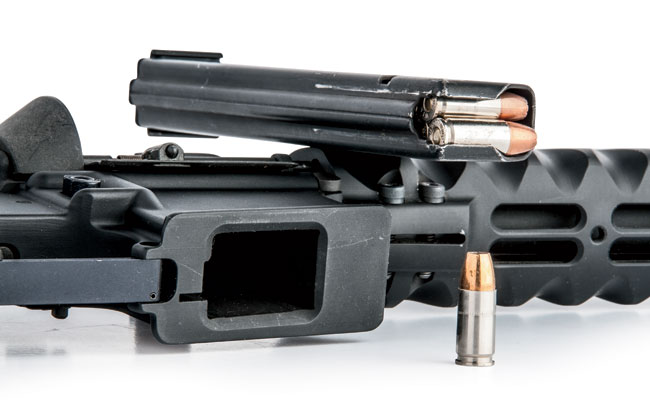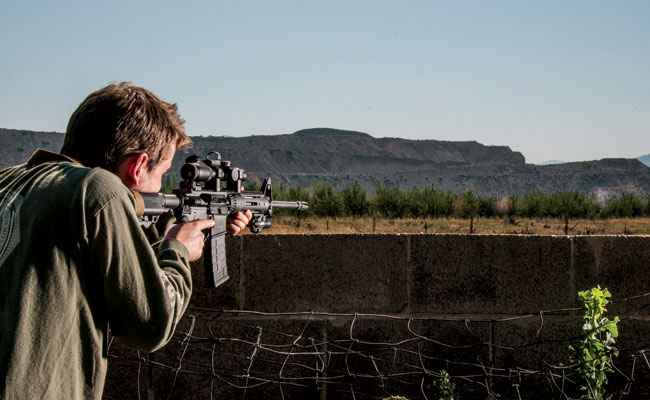
In addition to being arguably the most influential rifle design of its 52 years, the AR-15 is also the most controversial. According to many shooters, its alleged weaknesses stem from the cartridge it chambers. For the better part of its life, the M16/AR-15 digested only one kind of ammunition: the twin cartridges labeled 5.56 NATO and .223 Remington.
Currently, the 5.56/.223 is still the most practical choice for the AR-15. However, a myriad of other AR-15-specific cartridges of more-or-less usable design have cropped up in the last decade or two, including the .300 AAC Blackout (SAAMI-approved in 2011); the 6.8 Remington SPC (2004); the 6.5 Grendel (2003); .25-45 Sharps (2014); the .458 SOCOM (2001); .50 Beowulf (2003); and the spanking-new .22 Nosler (2017).
Additionally, wildcat cartridges for the AR-15, such as the 6mm/.223, abound. However, they’re not readily available, so for the purpose of this article, we’ll stick to SAAMI-approved factory rounds.
What’s the motivation behind all this cartridge innovation?
Most frequently, new-cartridge designers point out real and perceived weaknesses in current cartridges (usually the 5.56/.223) and make sometimes practical, sometimes outrageous claims as to how their new cartridge overcomes those weaknesses. My personal favorite was Remington’s statement that its new .30 Remington AR cartridge (introduced in 2008) was the ballistic equal to the .308 Winchester — and to prove it, the company provided ballistic charts contrasting the new short, fat AR cartridge with its 125-grain Reduced Recoil .308 load. Clearly, the latter does not showcase the .308 at its best; shooters saw through the farce, and the .30 Remington AR — quite a capable cartridge on its own terms — failed.
While most of the “new and improved” AR-15 cartridges offer certain advantages over the original M16/AR-15 round, all but one are less versatile. For example, the .300 AAC Blackout (which is simply a slightly modified version of J.D. Jones’s .300 Whisper wildcat) provides distinctly more close-range authority than the 5.56/.223 and is particularly useful in suppressed firearms, but it falls apart at long range.
Be that as it may, AR-15 enthusiasts have choices, and that’s a beautiful thing.
Here’s a look at what I consider to be the five most useful AR-15 cartridges available today, along with a brief shopping list of necessary conversion parts for each.

While it may not hit as hard up-close as the other cartridges listed, the 5.56 will put bullets on target from the muzzle to 1,000 yards with appropriate ammunition.
In full disclosure, I’ve left out the big-bore thumpers such as the fascinating .50 Beowulf and .458 SOCOM. Simply put, they’re so specialized that they’re a little beyond practical.
Also — and I can hear the wails of disbelief — you’ll note that the 6.8 SPC cartridge isn’t included. Why? It offers performance so indifferent in every category that it’s uninteresting to me. It’s not good at long range because it can’t shoot high-BC bullets, it’s not good for hunting because

